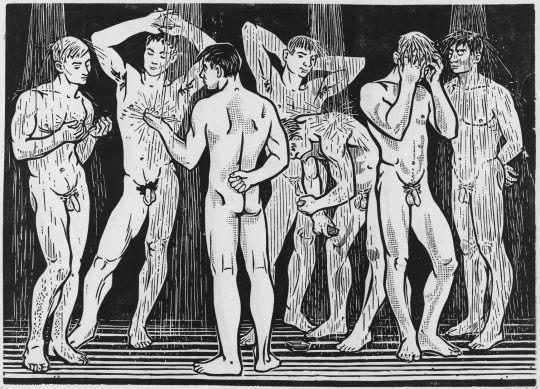What was that in the water? Probably nothing.
Last active 2 hours ago
Don't wanna be here? Send us removal request.
Text
Books are finite, sexual encounters are finite, but the desire to read and to fuck is infinite; it surpasses our own deaths, our fears, our hopes for peace.
— Roberto Bolano
31 notes
·
View notes
Text



Giorgio de Chirico. Piazza d'Italia. 1964.
Cover of the Gallimard Folio edition of Les Ombres errantes by Pascal Quignard (Éditions Grasset & Fasquelle, 2002) featuring a detail shot of Ruines avec la Légende de Saint Augustin attributed to Monsù Desiderio, who may actually be François de Nomé or Didier Barra (no date, but most likely from the early 17th Century). Finding anything out about this painting approximates pulling teeth; for some reason Google decided that I was actually looking for Böcklin's Totenisel of all things. Curiously the only supposedly full version of the painting I could find online is reversed from the novel's cover, with Augustine looking to the right instead of the left. Regardless, the book won the Prix Goncourt in the same year it was published. The English translation, titled The Roving Shadows, was done by Chris Turner in 2011, three years before I would first discover the book in a used bookstore whose owner is now dead and buried.
Japanese box art for the PlayStation 2 game Ico (2001), designed and directed by Fumito Ueda. The plot centers on a horny boy who can't stop holding a girl's hand. The first time I experienced the game was in 2011, watching a roommate play it. I recall enjoying the soundtrack immensely, alongside the general atmosphere. It has a feel of the mythic about it. In 2011, my mentor was still alive, and it was around this time that he introduced me to the negroni, a cocktail that I would learn to savor. On a cruise through the North Sea I was recently on, I drank quite a few of them, though at some point I caught on that all the drinks on-board were watered down, one supposes to prevent international incidents and men overboard. After making the hike up to Wittgenstein's (very isolated) cottage on a mountainside in Skjolden, I wondered what Smoove would've said about the thing if he weren't buried in the ground. Probably something involving Valkyries. It was in one of his classes that I first read the Tractatus, a sort of nightmare-labyrinth of a text, a testament of one man's attempt to reach out and grasp the Sublime. You really should read Spinoza before attempting Wittgenstein, if for no other reason than to understand the particular mode he's writing in. Also at the summit on the cottage's ersatz stone patio was a gay Scottish couple. One of them was doing a PhD in Gothic Literature. He had a lot to say about vampires.
0 notes
Text

A wonderpus octopus (Wunderpus photogenicus) off the coast of Batangas, the Philippines
by Roy Kittrell
178 notes
·
View notes
Photo

Rene Magritte - The Ignorant Fairy (1950)
20 notes
·
View notes
Text

Under the Shower (1964) by Jürgen Wittdorf: Berlin gallery revives men art of communist era
Seven men wash the sweat off their toned bodies in a communal shower. Unless you squint and mistake a tightly gripped bar of soap for something else, their limbs are suspended in tantalizing proximity but never quite touch.
The German artist Jürgen Wittdorf’s 1963 linocut print, from a series titled Youth and Sport, may look like something out of a top-shelf graphic novel or the virile drawings of the gay liberation icon Tom of Finland.
Yet the sensuous shower scene was never meant to scandalize, even while the men’s yearnings were hiding in plain sight: commissioned by the East German state, a framed print hung for years in the staircase of Leipzig’s sports academy and was later reproduced in a newspaper of the regime-run socialist youth movement.
Sixty years later, it is the visible tension between outward conformity and hidden desire that is driving a revival of Wittdorf, who fell into obscurity after the collapse of the German Democratic Republic and died in poverty in Berlin four years ago. In what would have been his 90th year, a first retrospective at the Biesdorf Palace gallery has been a surprise success, drawing 13,400 visitors to Berlin’s Marzahn district since its opening at the start of September of 2022.
271 notes
·
View notes


























